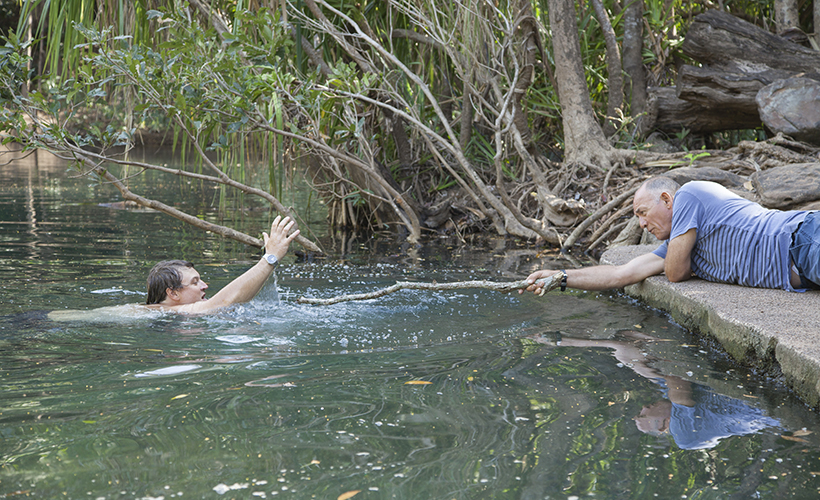 Every year, approximately five people lose their lives while attempting to rescue someone in trouble. While it may seem counterintuitive, your own personal safety should always be the number 1 priority in any rescue situation. Self-preservation is paramount!
Every year, approximately five people lose their lives while attempting to rescue someone in trouble. While it may seem counterintuitive, your own personal safety should always be the number 1 priority in any rescue situation. Self-preservation is paramount!
People in difficulty in the water are likely to be in a state of panic, fearing for their lives, and this makes the situation highly dangerous. A panicked, drowning person will reach out and, if given the opportunity, climb all over you in their attempt to stay afloat. Once this happens it is very difficult to break free, even for strong swimmers or those skilled in aquatic rescue techniques. There is a real risk of both of you drowning.
Royal Life Saving encourages people who find themselves in a rescue situation to follow the 4 As of rescue:
- Awareness. Recognise an emergency and accept responsibility
- Assessment. Make an informed judgement
- Action. Develop a plan and affect the rescue
- Aftercare. Give aid until medical help arrives
Once a potential rescuer has recognised the situation and decided they need to act (Awareness) it is the Assessment and Action steps that become so important in ensuring your own safety while executing a successful rescue.
The rescuer needs to look at the environment and consider why the person is in trouble. Every rescue situation is unique but where possible they should consider water depth, temperature, wind, waves, currents, visibility, time of day and any other potential hazards in, on or under the water. They should also consider the degree of urgency required (conscious or unconscious person), the swimming ability of the drowning person, the distance to safety, and entry and landing places. Finally, but equally important, they need to consider their own ability (knowledge, skills, fitness, judgement) with regard to the above factors. When reflecting on their own ability, they should also consider what other help may be available; for example, from bystanders and what abilities they may have.
Essentially, the rescuer needs to gather as much information as possible in an appropriate timeframe, and then ask themselves one fundamental question: Can I safely perform this rescue?
If the answer is ‘yes’, then a plan of Action is required.
It is here that the rescuer should minimise danger to themselves by carrying out the safest form of rescue possible. Royal Life Saving teaches different types of rescue, listed here with most safe first and the least safe last:
- Talk
- Reach
- Throw
- Wade
- Row
- Swim (accompanied rescue)
- Non-contact tow
- Contact tow
The rescuer should consider:
- Can I talk to the person, calming them down and directing them to a safer location?
- Is there something on hand that I could use to reach the person, such as a rope, stick, or towel?
- Is there something I could throw to the person to aid their buoyancy, such as a lifejacket, kickboard, or esky (cooler) lid?
- Can I wade out to the person and then reach out to give them a rope, stick or towel to pull them to safety?
- Is there a canoe or something similar I can row out and have them hold on to?
- Can I swim out to them and, while keeping a safe distance, pass them a buoyancy aid and accompany them to safety, encouraging and instructing them?
- Can I swim out to them and, while keeping a safe distance, hand them a buoyancy aid and tow them back to safety? (non-contact tow)
- If all else has failed, do I know how to perform a contact tow to get them back to safety? Do I have the strength, skill and fitness to do this while ensuring my own safety is the number one priority? Am I capable of dealing with a panicked person wanting to grab hold of me?
Learn more about water safety, the principles of rescue and the various rescue and aftercare techniques by taking a Royal Life Saving course such as the Bronze Medallion, Grey Medallion or Pool Lifeguard.
